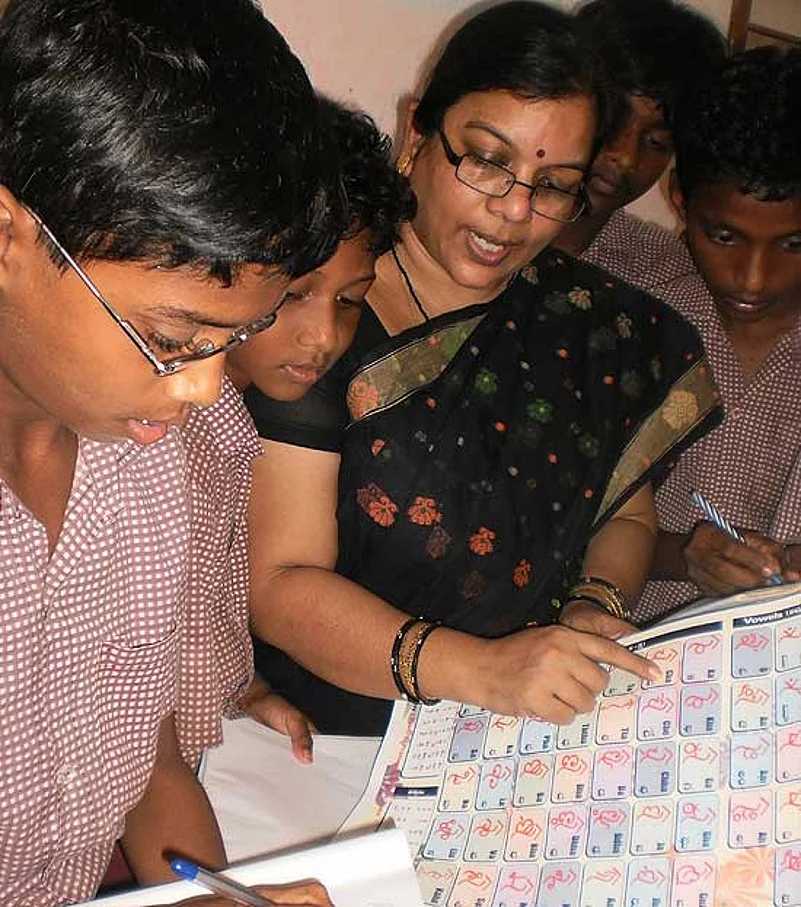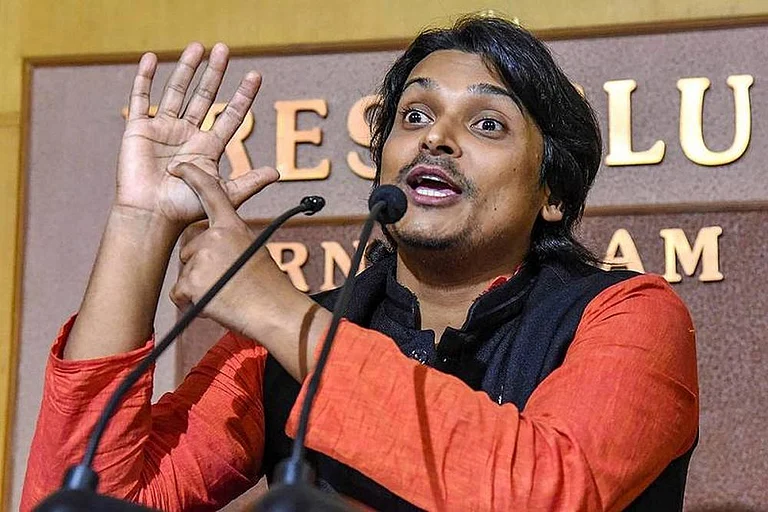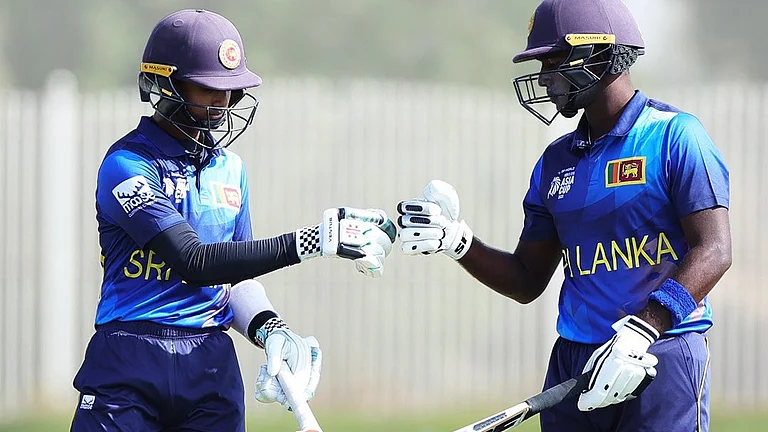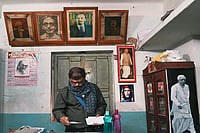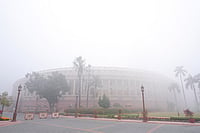Write Code
Languages in which new scripts have been developed and the areas they are spoken in:
- Gondi: Chhattisgarh, AP, MP and Maharashtra
- Santhali: WB, Jharkhand, Orissa
- Koya: AP, Orissa
- Kolam: Maharashtra, AP, MP
- Konda-Dora: AP and Orissa
- Koya, Porja, Bagatha: AP
***
A professor of English at Andhra University in Vishakhapatnam is the sole author of what may be called a scriptural revolution. Prof S. Prasanna Sree, a member of the Kurru tribe, has since November last year released scripts for 10 tribal languages that have not so far had a writing tradition, beginning with the Kupia language of the Valmiki tribe of Andhra Pradesh. In July, she released a script for Gondi, spoken by over two million people in Andhra Pradesh, Chhattisgarh, Orissa and West Bengal. Taken together, the ten scripts could benefit several million tribespeople. They have also become emblematic of an assertion of tribal identities since they avoid looking like impositions—which happens if one merely adapts scripts of major languages like English or Hindi to serve as approximations of the sounds of tribal languages.
“A script serves to legalise their language and protect their vast oral riches. But, more importantly, there is now a growing realisation that an indigenous, independent script also helps boost cultural identity,” says Sree. She uses easily identifiable symbols in her alphabets to strike a chord with the tribals. For example, an abstract bow and arrow is a motif in her script for the Kupias, who are renowned as skilled archers. New scripts are not for assertion of identity alone: they are also being created for accurately representing the unique sounds of tribal languages instead of letting them be drowned out, over time and through usage, by the superposition of an alien alphabet.
The yearning for script is also evident in Santhali, the major tribal language of eastern India. While Bangla and English scripts have been used for Santhali, a growing number of Santhals use and promote Ol Chiki script, developed in the 1930s by Raghunath Murmu and now recognised by the state. “There is a definite sense of pride among Ol Chiki supporters. They see it as their script, a counter to the stereotype of tribals being illiterate, and their languages being no more than a few mutterings and signs,” says Nishaant Choksi, a doctoral scholar at the University of Michigan who is researching Santhali. Ol Chiki hasn’t stopped Santhals from developing newer scripts; there are over 14, the last some five years back.
Other tribal languages of eastern India, like Ho and Kurukh, are also going for scripts of their own, says Vandana Tete, general secretary of the Jharkhandi Bhasha Sahitya Sanskriti Akhra. Last year, textbooks were printed in Kurukh for the first time, in the Tolong Siki script, developed for it in 2006. Voluntary groups are also helping Ho speakers promote its Warang Chiti script. And in the central and eastern tribal belt of Gujarat too, people are toying with the idea of creating new scripts. The scripts developed by Sree are being propagated by supporters at public events—even at birthday parties and weddings, where printed charts are distributed.
The Maoists, too, have begun work in this field. They are developing a script for Gondi, spoken widely in Maoist-dominated regions, to do away with the Devanagari script. They are also backing the Ol Chiki script for Santhali, seeing it as appealing to the sense of tribal identity.
While the new scripts are likely to run into obstacles—one of which is the widespread illiteracy among tribals—they are one more sign that tribals no longer want to make do with handouts.






